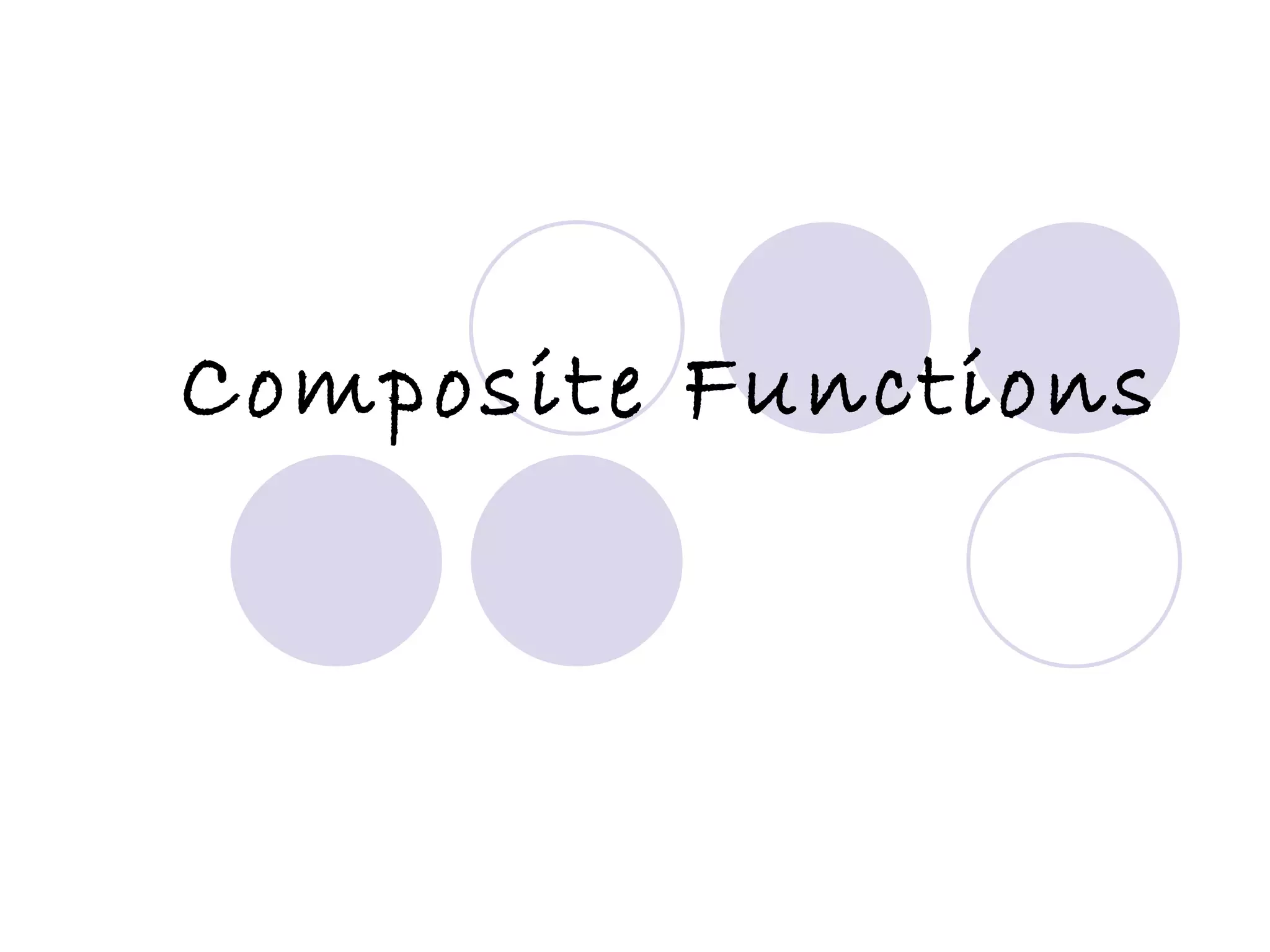Composite functions are formed by taking the output of one function and using it as the input of another function. This is shown notationally as f(g(x)), where the result of g(x) is used as the input for f. Changing the order of the functions changes the result, as the output of the inner function determines the input to the outer function. Examples show evaluating composite functions by substituting the output of the inner function into the outer function and simplifying.






